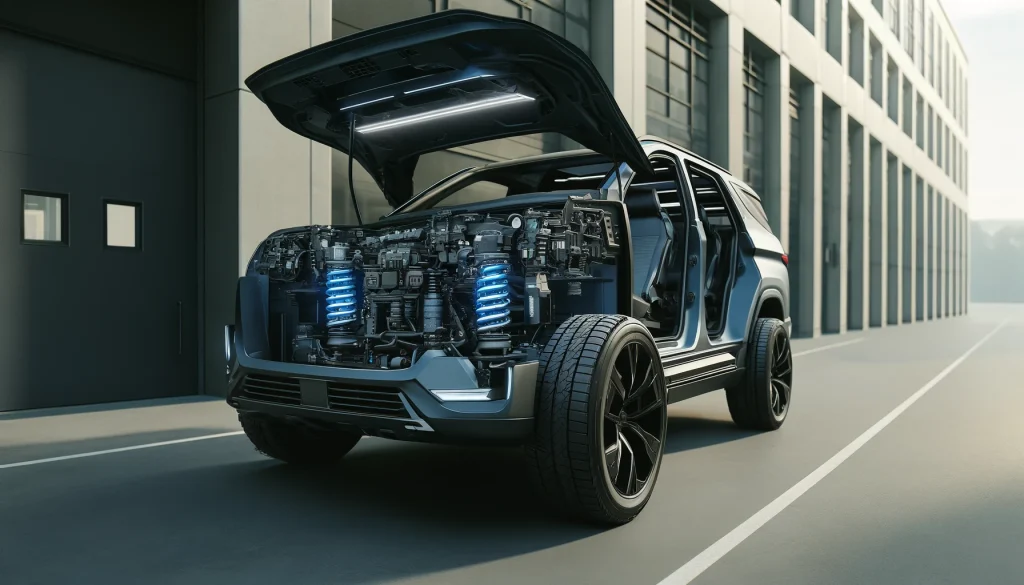Are you considering upgrading your vehicle's suspension system and intrigued by the idea of integrating it with advanced electronic components? Look no further!
This guide will explore the exciting world of air suspension integration with vehicle electronics.
All the experts agree, adjustable ride control to electronic height adjustment, we'll uncover the benefits, challenges, and everything in between. Whether you're a seasoned enthusiast or a newcomer to automotive customization, this article will provide valuable insights into harnessing the power of electronics to enhance your air suspension setup.
The Evolution of Air Suspension Integration

From Manual to Electronic Control
Traditionally, air suspension systems were manually controlled, requiring drivers to adjust ride height and stiffness manually. However, vehicle electronics advancements have revolutionized how we interact with suspension systems.
Electronic control modules (ECMs) now allow for precise, automated control of air suspension components, providing drivers with unparalleled customization and convenience.
Seamless Integration with Vehicle Systems:
One of the key advantages of integrating air suspension with vehicle electronics is seamless compatibility with existing systems. Modern vehicles are equipped with a wide range of electronic sensors and actuators, which can be leveraged to enhance the performance and functionality of air suspension systems.
Tapping into the vehicle's electronic network allows air suspension systems to adjust ride height, stiffness, and damping in real-time, optimizing performance for different driving conditions.
Benefits and Challenges of Integration
Enhanced Performance and Comfort:
Integration with vehicle electronics allows for dynamic adjustment of air suspension settings, providing drivers with a smooth, comfortable ride and improved handling. Electronic control enables rapid response to changing road conditions, ensuring optimal performance and comfort at all times.
Complexity and Reliability Concerns:
While electronic integration offers numerous benefits, it also introduces complexities and reliability concerns. Electronic components are susceptible to malfunctions and failures, which can compromise the performance and safety of air suspension systems.
Proper installation, regular maintenance, and adherence to manufacturer guidelines are essential for ensuring the reliability and longevity of integrated systems.
Tips for Successful Integration
- Choose Quality Components: Invest in reputable electronic components and sensors for automotive applications.
- Follow Manufacturer Guidelines: Adhere to installation and programming instructions provided by the air suspension and electronics manufacturers.
- Perform Regular Maintenance: Routinely inspect and maintain electronic components to ensure optimal performance and reliability.
- Test and Calibrate: Conduct thorough testing and calibration of integrated systems to verify functionality and performance.
- Seek Professional Assistance: Consult with experienced technicians or automotive professionals specializing in air suspension and electronics integration when in doubt.
Air Suspension Systems Prone to Integration Challenges
Passive Air Suspension Systems:
Passive air suspension systems, which lack electronic controls and rely solely on mechanical components, may struggle to integrate seamlessly with vehicle electronics.
Without electronic sensors and actuators, these systems cannot adjust ride height or stiffness dynamically based on driving conditions. As a result, compatibility issues may arise when attempting to integrate passive air suspension systems with electronic control modules (ECMs) and vehicle networks.
Older or Aftermarket Systems
Older or aftermarket air suspension systems designed before the widespread adoption of electronic controls may face integration challenges with modern vehicle electronics.
These systems may lack the necessary electronic interfaces or compatibility with vehicle-specific protocols, making seamless integration difficult.
Retrofitting older or aftermarket air suspension systems with electronic controls may require extensive modifications and custom programming to ensure compatibility and functionality.
Also read: Air Suspension: Towing and Hauling Capability
Custom or DIY Installations
Custom or do-it-yourself (DIY) air suspension installations, which may utilize non-standard components or wiring configurations, can also pose integration challenges with vehicle electronics. Inconsistent wiring, improper grounding, and compatibility issues with electronic sensors and modules may result in communication errors or malfunctions.
To avoid integration issues, it's essential to follow established guidelines and best practices for air suspension installations and seek professional assistance when necessary.
Air Suspension Integration With Electronics: Performance, Comfort, and Functionality Guaranteed
In conclusion, air suspension integration with vehicle electronics offers exciting opportunities to enhance performance, comfort, and functionality. By leveraging advanced electronic control systems and components, drivers can enjoy a smooth, customized ride tailored to their preferences and driving conditions.
With careful planning, proper installation, and ongoing maintenance, integrated air suspension systems can deliver years of reliable performance and driving pleasure.
Check out our selection at Airbagit.com and get the best products on the market!
Join our social media communities on Facebook and Instagram for best tips and deals in the industry!

